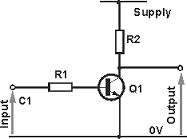 www.radio-electronics.com
www.radio-electronics.com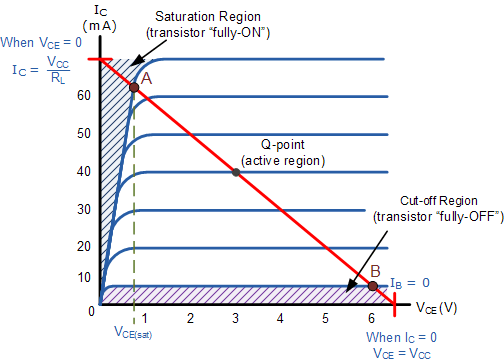
(4) Transistors, Logic gates, EM spectrum, electrochemistry half cells
Resistors, capacitors and inductors are all passive circuit components because they cannot act as sources of power. Yes, a transformer can increase the size of AC voltage-in to voltage-out, but at a typical cost of 4% power loss. Now we consider transistors, which are active (3-terminal) elements which (thanks to external power supplies) can increase the power out compared to the voltage X current coming in.
Transistors can act as either linear gain elements or digial switches.
Topics: BJT solid state functioning; BJT vs FET transistors; Transistor as
electronic switch; Analog switches; switching speeds
Transistor
as "back to back diodes",
Braitten,
Bardeen and Shockley, Bell Labs, 1949--Nobel Prize!
doping silicon crystal: column 5: phosphorus for n-type, column 3: boron for
p-type
http://hyperphysics.phy-astr.gsu.edu/hbase/solids/dope.html
BJT
thickness 1 micron of base region; emitter more doped than collector;
AZ: electrons moving across E-B junction can diffuse across base
to collector and then move up; a few holes go the opposite direction. See energy
vs distance curve for another POV. What
happens if base is too thick? recombination...
A narrated animation of the BJT in action:
http://www.youtube.com/watch?v=9CrcRabTQ0s
Another
animation trying to explain the current gain in an BJT:
http://www.learnabout-electronics.org/bipolar_junction_transistors_05.php
For
more solid state physics than you need:
http://www.ee.sc.edu/personal/faculty/simin/elct882/03%20heterojunctions.pdf
Wikipedia: To
minimize the percentage of carriers that recombine before reaching the collector–base
junction, the transistor's base region must be thin enough that carriers can
diffuse across it in much less time than the semiconductor's minority carrier
lifetime. In particular, the thickness of the base must be much less than the
diffusion length of the electrons.
Common
emitter inverter; Ic/Ib current gain = 100
 www.radio-electronics.com
www.radio-electronics.com

Emitter
follower circuit: (example: a GFI solenoid from emitter to ground).
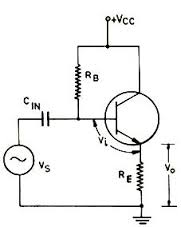
Phototransistor
and photons releasing electrons in base. Different from photo-resistor of first
video!
2N4401 npn transistor in EN123; 1A current max: (need for heat sink).
FETs: better saturation voltage, better freq response. High input impedance.
From
http://www.electronics-tutorials.ws/transistor/tran_6.html
we see a cross-section
that shows an n-channel with a insulating layer above, between the channel and
the upper metal electrode. Depending on the voltage at the GATE, charge carriers
can be either force away (negative voltage) or allow to move through the channel
from the drain to the source (negative electrons). n that
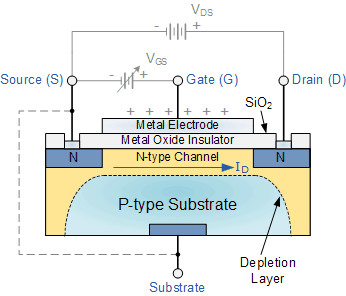
differential amplifier:
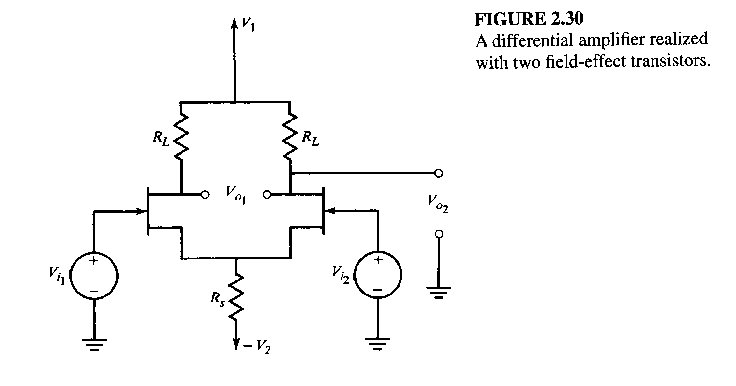
www.eie.polyu.edu.hk
See
http://www.eie.polyu.edu.hk/~ensurya/lect_notes/commun_cir/Ch2/Chapter2.htm#DiffAmp
for more detail.
Horowitz
and Hill, The Art of Electronics,
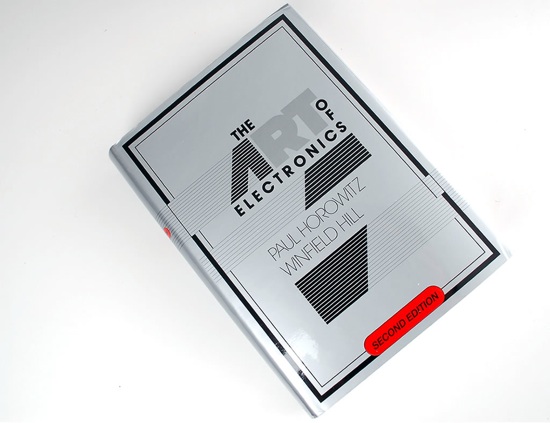
DIGITAL
LOGIC:
ref: Digital Design from Zero to One, John Wiley & Sons, 1996.
Logic Noise Margins
for
example the TTL (bipolar junction transistor logic family 7400 series)
Vcc the supply voltage is guaranteed between 4.75 and 5.25 v; below 4.75 chips
may not work as advertised; above Vcc-max 7.0 volts chips may be permanently
damaged.
Logic LO = 0 = FALSE = inactive = open switch is between 0v and 0.8v
Logic HI= 1= TRUE = active = closed switch is above 2.2v up to 5.0v
Region in TTL between 0.8 and 2.2 is "not allowed"
Noise
Margin represents the advantage of digital
or analog representation; a digital recording can be faithfully reproduced,
whereas reproduction of an analog "master tape" will always be degraded...
To change from LO to HI the voltage of the TTL logic gate must pass through the noise margin region--as quickly as possible--nanoseconds. An voltage between 0.8 and 2.2 must be "converted" to 0 or 1, from its metastable region. TTL chip mfgrs make chips that have stable outputs only for logic 0 or logic 1... same for any other chip family...
Base
2 numbers, hexidecimal representation: 0 1 2 3 4 5 6 7 8 9 A B C D E F
in base 2, C = 1 1 0 0
in
C++ code for IAR editor hex code is 0xCF = decimal
12*16 + 15 = 207
representing negative numbers: 2's complement.
Combinatorial Logic: logic gates "without memory"
circuits without feedback.
7400
series hex inverters: input hysteresis 7414,
open collector output 7406...interface between voltage levels, drive LEDs...
EXAMPLE:
Here is a truth table to turn into logic gates:
C B A OUT
0 0 0 0
0 0 1 0
0 1 0 0
0 1 1 1
1 0 0 0
1 0 1 0
1 1 0 1
1 1 1 0
Realize as "Sum of Products" AND to OR two-level circuit
A
challenge: minimizing the number of gates needed:
Karnaugh Maps
NAND gates 7400
EXOR gates and parity check:
Multiplexer / deMux
Read
Only Memory
SEQUENTIAL: logic circuits with memory, with feedback.
Set Reset Latch with output Q
S R Q
0 0 no change: the memory state!
0 1 0 (RESET)
1 0 1 (SET Q to logical 1)
1 1 not allowed!
clocked D flip flops
Toggle flip flops
shift registers
counters
states, and Finite state machines.
Part
3: combinatorial + sequential and CPUs:
instructions: source, function, destination.
---------------- -------------------- ------------------
Computer programming:
LabVIEW 2013
ARDUINO
rev 1.0.5 : Coding, functions, interrupts.
example code...
setup, loop... *.ino file, their version of C...
save often! "verify" (compile) often!
rename when appropriate...
IF
FOR
WHILE
Matlab
2013: command window, scripts, and functions...
-----------
---------------------- ----------------
Electromagnetic
radiation spectrum:
power lines, radio, microwave/radar, infrared, visible, ultraviolet, x-rays,
gamma rays, cosmic rays.
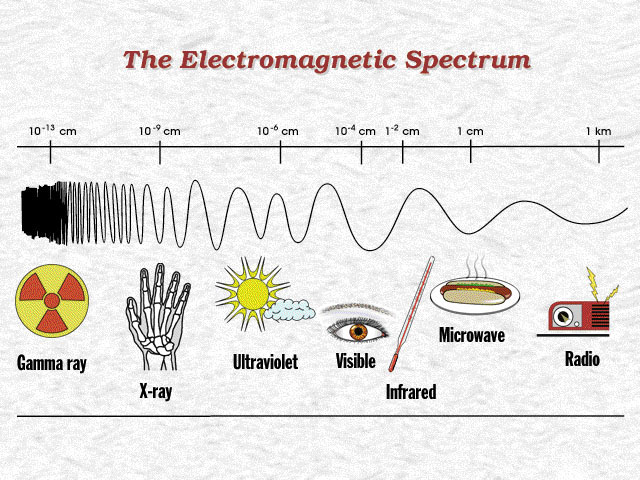
Topics
from Chemistry and Materials Science:
Hooke's
Law: ![]() , a version
of F =k* Δ x
, a version
of F =k* Δ x
conductors, insulators, and semiconductors: Effect of temperature on conductivity?
electrochemistry:
half cells and reactions with water...
Reference for BMEs:
G. Bendek & F. Villars, Physics with Illustrative Examples from Medicine
and Biology:
vol 3, Electricity and Magnetism
possible
to download the book on Kindle, iPad, etc., see example below:
http://ebookoninternet.com/2544367/physics-illustrative-examples-medicine-biology-vol-3-g-b-benedek-f-villars.html